ROBERT WILLIAMS BUCHANAN (1841 - 1901)
|
ROBERT WILLIAMS BUCHANAN (1841 - 1901) |
|
|
|
|
|
|
|
|
ST. ABE AND HIS SEVEN WIVES |
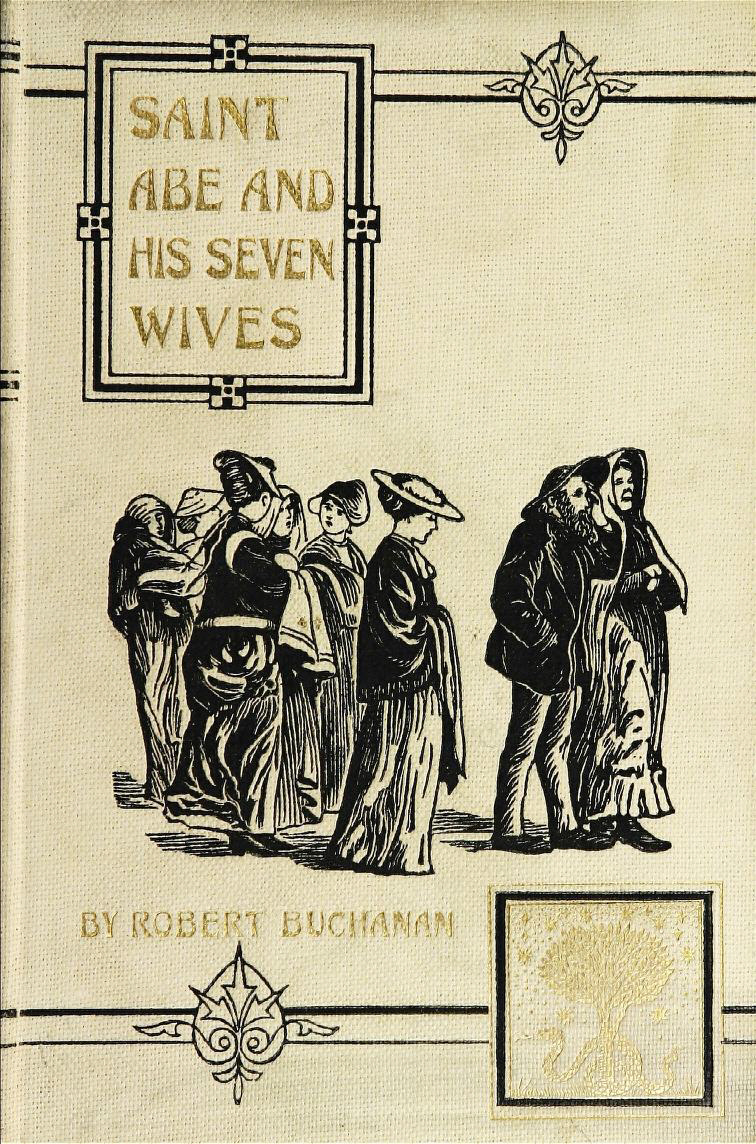 |
|
ST. ABE AND HIS SEVEN WIVES |
|||
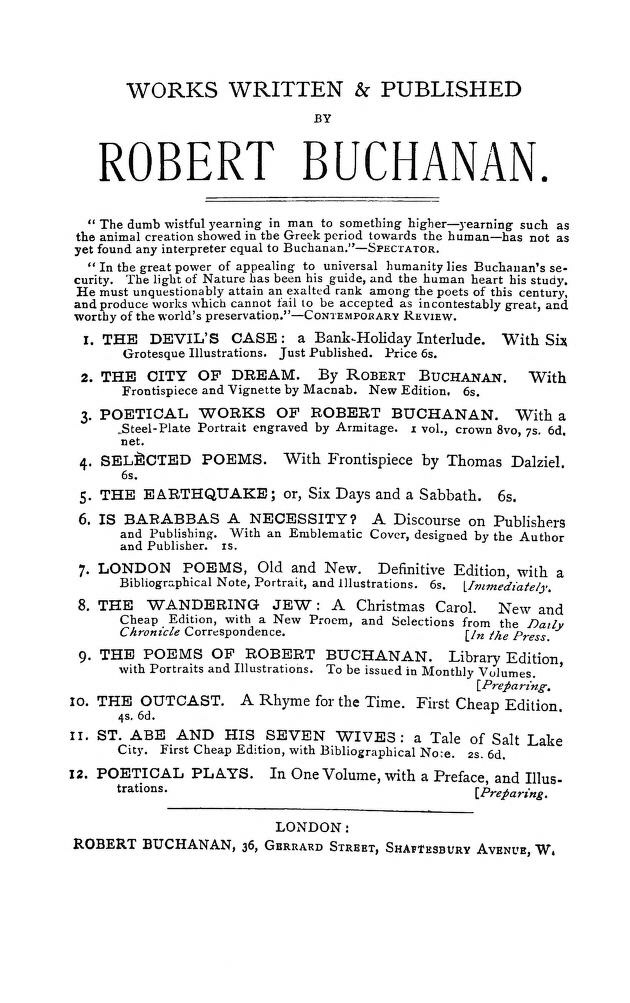 |
|||
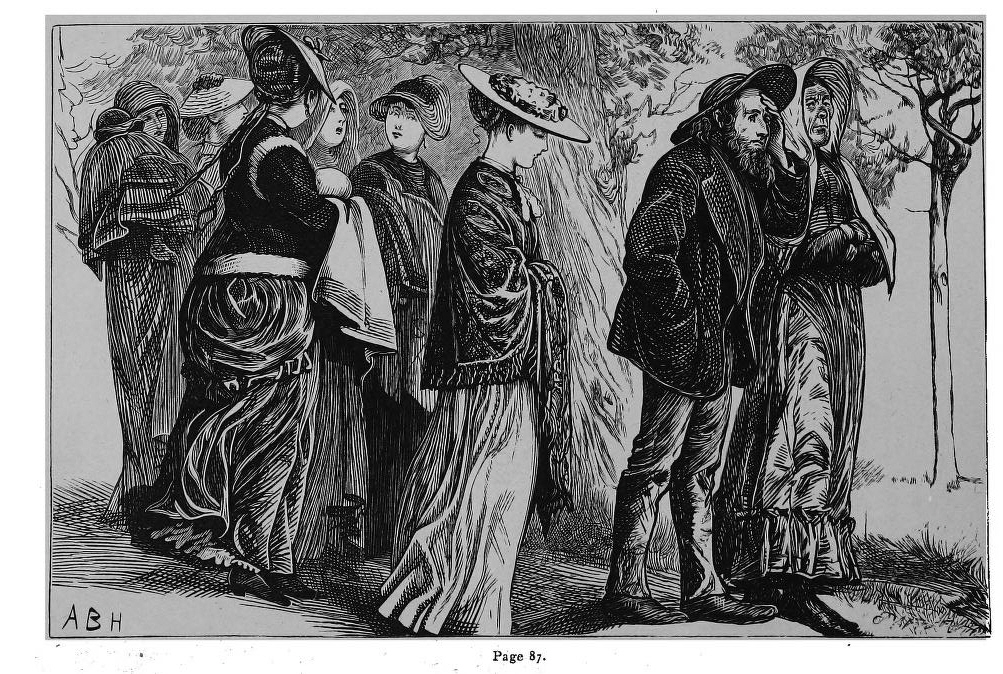 |
|
ST. ABE AND HIS SEVEN WIVES
A Tale of Salt Lake City
WITH A BIBLIOGRAPHICAL NOTE BY ROBERT BUCHANAN
FIRST CHEAP EDITION
LONDON _____
PAGE |
|
_____
[Note: Not included in the Contents.] BIBLIOGRAPHICAL NOTE ON ST. ABE AND HIS SEVEN WIVES. ANTICIPATORY CRITICISMS ORIGINALLY PREFACED TO ST. ABE AND HIS SEVEN WIVES: SOME NOTICES OF THE FIRST EDITION. _____
[Notes: This is the final version of St. Abe and his Seven Wives published in 1896 by Buchanan himself. The version in the 1901 edition of ‘The Complete Poetical Works’ occurs in the first volume, which was a reprint of the 1884 ‘Poetical Works’. This version is the same as the third edition of 1872, which altered two lines: Page 104, line 3: ‘Blessed is he both night and day,’ replaced in the third edition by ‘Blessed is he and for ever gay,’. Page 149, line 3: ‘And like the bright sword that did chase the first of sons and mothers,’ replaced in the third edition by ‘And like the bright sword that did chase the first of sires and mothers,’. And there is one misprint (which I have corrected): Page 9, line 19: ‘Guess I was like a thirsty hoss’ should be ‘Guess I was like a thirsty boss’. The main difference between the 1896 and earlier editions is the addition of Buchanan’s name as author of the poem and the Bibliographical Note which explains the circumstances of its original publication. The frontispiece by A. B. Houghton was added to the third edition, as were the ‘Opinions of the Press’, and the ‘Testimonies of Distinguished Persons’, which are included in the 1896 edition as ‘Anticipatory Criticisms’. The reviewer of the third edition of St. Abe in The Nonconformist (8 May, 1872) wrote: “He has also supplied a very characteristic appendix, in which he gives the “opinions” of distinguished persons upon his production. These are done something after the manner of Carlyle’s opinions of “publisher” and “taster,” given in early editions of his Sartor; but they are inimitably quaint and original. The “distinguished persons” are easily recognisable, and their publicly-expressed sentiments are caricatured by being driven to extreme expression.” ‘Easily recognisable’ in 1872, perhaps, but to save others the trouble, here’s the list of ‘distinguished persons’ I arrived at in 2014: I. FROM PRESIDENT GRANT, U. S. II. FROM R. W. EMERSON, BOSTON, U. S. III. FROM WALT WHITMAN, WASHINGTON, U.S. IV. FROM ELDER FREDERICK EVANS, OF MT. LEBANON, U.S. V. FROM BROTHER J. H. NOYES, ONEIDA CREEK. VI. FROM ELIZA FARNHAM, OF STATEN ISLAND. VII. FROM THOMAS CARLYLE, ESQ., CHELSEA, ENGLAND. VIII. FROM JOHN RUSKIN, ESQ., LONDON. IX. FROM MATTHEW ARNOLD, ESQ., ENGLAND. According to page 224 of The Shaker Experience in America: A History of the United Society of Believers by Stephen J. Stein, Frederick W. Evans was “An elder at the North Family at Mount Lebanon, New York. Evans was the leading spokesperson for progressive Shakerism.” John Humphrey Noyes (Buchanan gives his first initial as ‘T’ but I assume this was a mistake) was the founder of the Oneida Community and is credited with coining the term, ‘free love’. Eliza Farnham I am unsure of, since she died in 1864, and all the others in the list were still alive in 1872. I have also guessed at the address since she was born and died in New York. She was a novelist and a feminist, so her ‘comments’ on St. Abe seem to fit, but, I have to admit it is a guess. Then again, Buchanan didn’t have access to wikipedia so maybe he didn’t know she was dead.] |
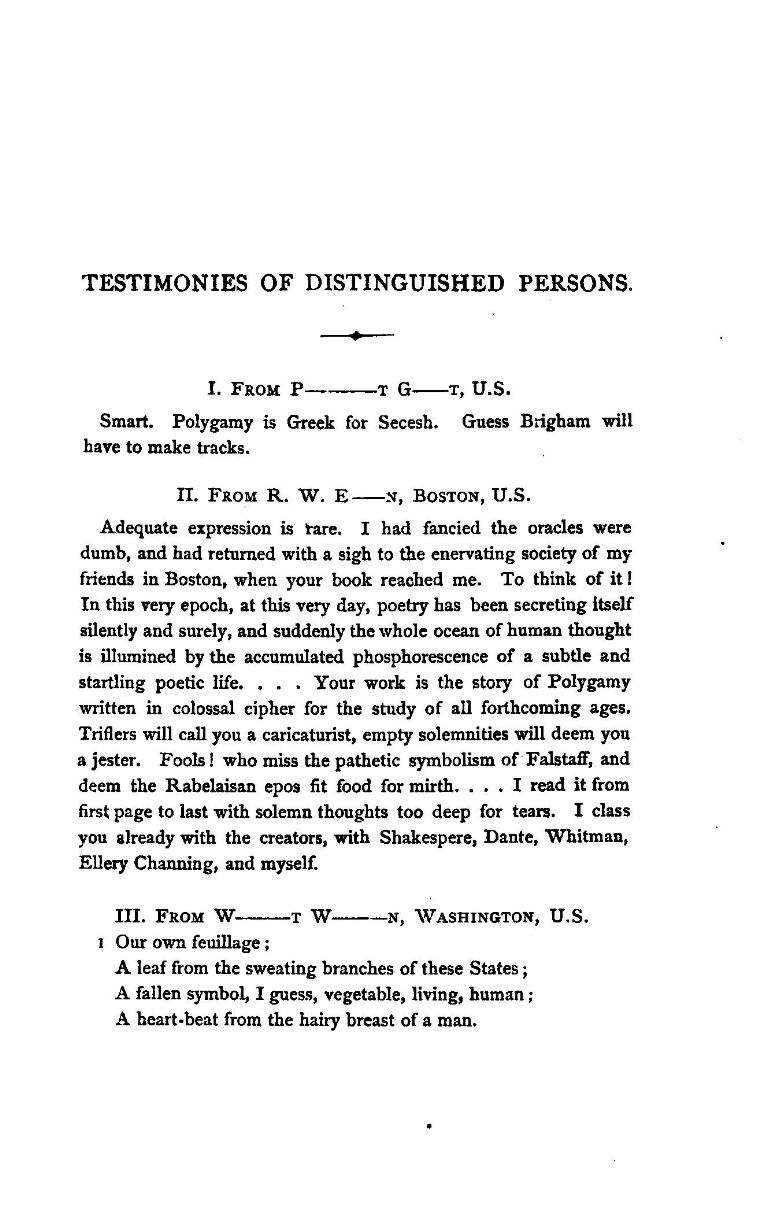 |
|
[First page of the ‘Anticipatory Criticisms’ from the Third Edition of St. Abe. Below: the cover and title page of the First Edition.] |
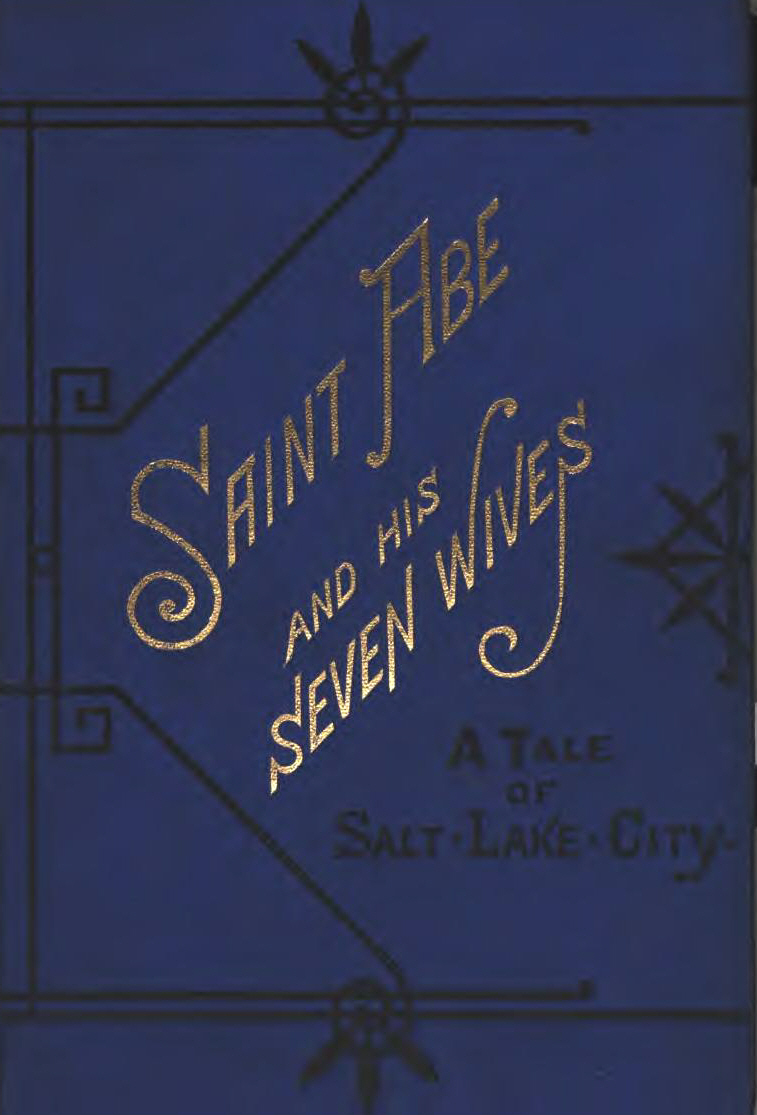 |
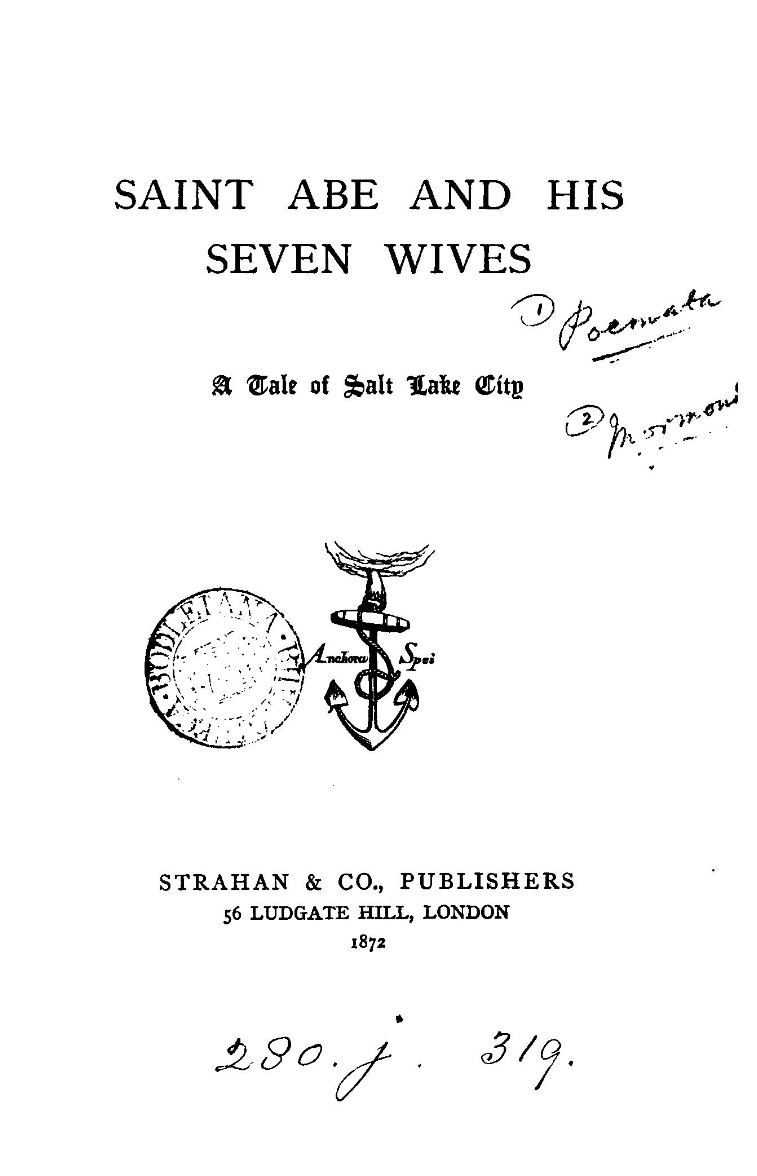 |
|
Reviews of St. Abe and his Seven Wives Back to Poetry
|
|
|
|
|
|
|